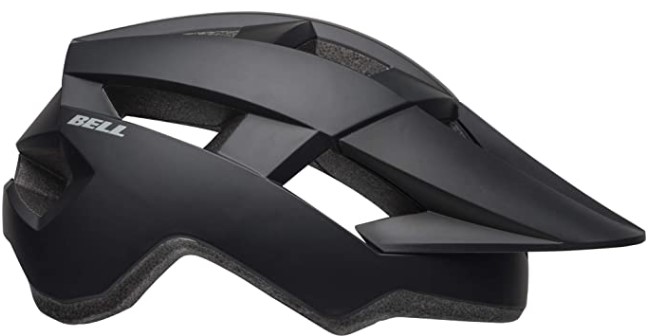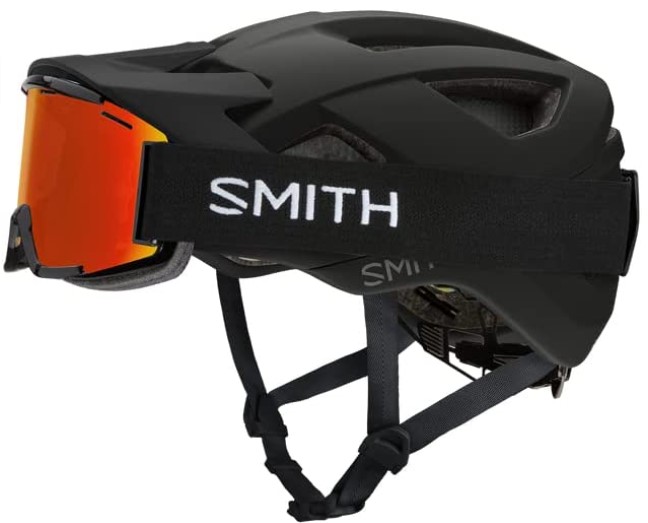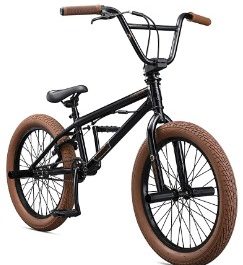Mountain bike helmets traditionally differ from road bike helmets. That is because the former have visors which is not the case with the latter. But why do mountain bike helmets have visors?
Visors shield you from natural elements like sun, rain, and snow. Also, when riding on muddy trails when windy, the visor protects your face from flying objects. Even better, it protects you from severe injury during crashes, and lastly, you can attach add-ons like lights and a camera.
This guide will dig deeper into mountain bike helmet visors, their importance, the types, and how to attach one to your helmet. As a bonus, I will also answer questions about why mountain bike helmets have visors while road bike helmets lack them.
Let’s get started!

What Is a Helmet Visor?
A visor is a front part of the helmet that you can pull to cover the face, and it protects you from natural elements like the sun, rain, or snow.
Why Do Mountain Bike Helmets Have Visors?
Now that we understand what a visor is, let’s look at the common reasons why mountain bike helmets have visors below:
1. Shields You from Natural Elements
The top reason mountain bike helmets have visors is to shield you against natural elements like the rain, sun, and snow.
The truth is that it’s hard to predict weather patterns. You can enjoy your ride, and suddenly rain starts pouring or, even worse, it gets too hot.
Well, since you are cycling upright, it means that the sun is usually at eye level. That can be a disturbing factor as you will not be able to see clearly. What can happen, at the least, is a fall or, even worse, an accident.
Again, when it is snowy, rainy, or windy, your eyes will start watering, which means you will have blurry vision that can lead to falls.
With a visor on your helmet, you can protect your face from all these harmful weather elements. Also, visors are better than goggles and are a must-have before hitting rough mountain trails.
2. Offers Protection from Flying Objects
You may encounter flying branches, insects, or dust when riding on small/narrow trails or directly against the winds.
Also, if you ride as a group, as most pro mountain bikers do, on muddy trails and lag behind them, their bikes will likely splash mud and debris to your face. Or, if you are tackling the forest trails with low-hanging branches, you can hurt your face, especially your eyes.
However, a visor guarantees to keep your face free from all these harmful elements. That means that you will enjoy your ride and keep your face protected.
3. Cushions Your Head During Accidents and Crashes
Just know this, a helmet visor will reduce the chances of crashes and the risk of severe injuries. Visors protect you from crashing as they protect your vision, ensuring you have a clear focus when riding.
You don’t fear the sun’s intense UV rays, rain, snow, debris, mud splashes, hanging branches, or any other obstacles you may find along the trails.
That means that you gain confidence and have more bike control. Even if you fall, rest assured that you won’t incur severe injuries on the face and head.
Generally, a visor is essential in mountain biking as it cushions your head and face by absorbing shock in case a fall happens.
4. Allows you to Mount Bike Accessories
Lastly, if you are like me, you would like to attach a POV camera to your visor to capture and keep the memory of an enjoyable ride, especially if you tag friends. A visor offers you that!
Also, you can attach a light on your visor if you plan to ride at night or when tackling dimly lit paths.
Types of Mountain Bike Helmet Visors
Ideally, there are three types of mountain bike helmet visors. They include:
- Built-in visors (fixed visors)
- Detachable visors
- Adjustable visors
Let’s discuss each type below:
1. Built-in Mountain Bike Hemet Visors
As the name hints, built-in or, in other words, fixed visors are permanent visors that are entirely built on the helmet’s outer shell.
Since they are sturdily built in place, they aren’t flexible enough. However, by adjusting their distance or height, you can adjust them downwards or upwards, depending entirely on the temperature.
That said, all is not merry about built-in visors. They do not entirely offer maximum protection, especially during falls or crashes. So, if you like riding on rough trails, they are not your cup of tea.
Built-in visors are an excellent choice if you tackle less rough trails regularly. If you are looking for a mountain bike helmet with a visor built in, you won’t go wrong with the BELL Spark MIPS Adult Mountain Bike Helmet (Check on Amazon).

2. Detachable Mountain Bike Helmet Visors
Detachable visors are the type that attaches to the helmet using snap-in stems, magnets, or screws, and you can connect them with your hands at home without using any tool.
They come off hassle-free and attach securely. So, forget the idea of the visor falling.
The best part is that detachable visors are more expansive, unlike fixed visors. Thus they offer you excellent protection against harmful weather elements while also protecting you during a crash.
Since you can detach and remove the visor, you can use your helmet for other types of riding, like road biking, and put it back when needed.
3. Adjustable Mountain Bike Helmet Visors
If you own a high-end mountain bike, I know you would also like to invest in a high-end helmet. Well, adjustable visors are popular in high-end mountain bike helmets.
The good news is that these visors extend further than the rest, which means they offer more excellent protection than their counterparts.
Adjustable visors attach firmly to the helmet shell by screwing them tightly on each side. Since these visors can be adjusted and have much flexibility, you can put them on when in need or move them up.
The Smith Session Mountain Cycling Helmet (Check on Amazon) is one high-end mountain bike helmet with an adjustable visor that every mountain biker dreams of owning. This helmet has an adjustable visor and employs MIPS technology that offers impact protection.

How to Attach Mountain Bike Visors to Helmets?
Now that we know what a visor is, its importance, and its type, let’s answer this critical question: can you add a visor to a bike helmet?
Well, the short answer is YES! If you bought a helmet without a molded visor, the helmet has ready slots for attaching one.
Below are ways to attach a visor to your mountain bike helmet:
· Screw-on Method
Adding a visor to bicycle helmet is a brilliant idea, and one method you can add is by screwing it to the helmet.
Screw-on visors can withstand a crash and branches as they are durable and don’t sway from their position. Another advantage of screw-on visors is that they allow you to detach and clean them when soiled and store them when not in use.
· Snap-on Method
You can snap on the visor if you own an inexpensive helmet (mostly in kid’s cases). That means the visor can detach during a fall or crash, posing a danger to the face.
People Also Ask
1. What Is the Visor On a Bike Helmet for?
Mountain bike helmet visors are essential in shielding riders against natural elements like rain, snow, and the sun. In addition, visors protect the face from debris and branches, absorbing shock in crashes and accidents, thus reducing the injury severity and allowing you to mount a camera or light.
2. Why Don’t Road Bike Helmets Have Visors?
Unlike mountain bike helmets that come with visors, road bike helmets don’t. That is because a visor will obstruct their vision when riding at high speed and sitting aerodynamically.
For this reason, road riders prefer sunglasses or google for eye protection against weather elements.
3. Do Mountain Bike Riders Need to Wear a Visor All Time?
Many mountain riders have different opinions on this matter. So, it entirely depends on your safety and the comfort you need.
However, a visor is necessary when riding on rough trails. Though a helmet visor limits vision, it protects your face and head when you encounter a fall or crash.
Why Do Mountain Bike Helmets Have Visors? Final Say
As discussed in this guide, mountain bike helmets have visors to protect you from sun, snow, rain, flying branches, and debris. Additionally, they act as shock absorbers during a fall or crash, minimizing injury.
In conclusion, you can mount mountain biking accessories like POV cameras and light when riding on dark trails.
Relevant:

